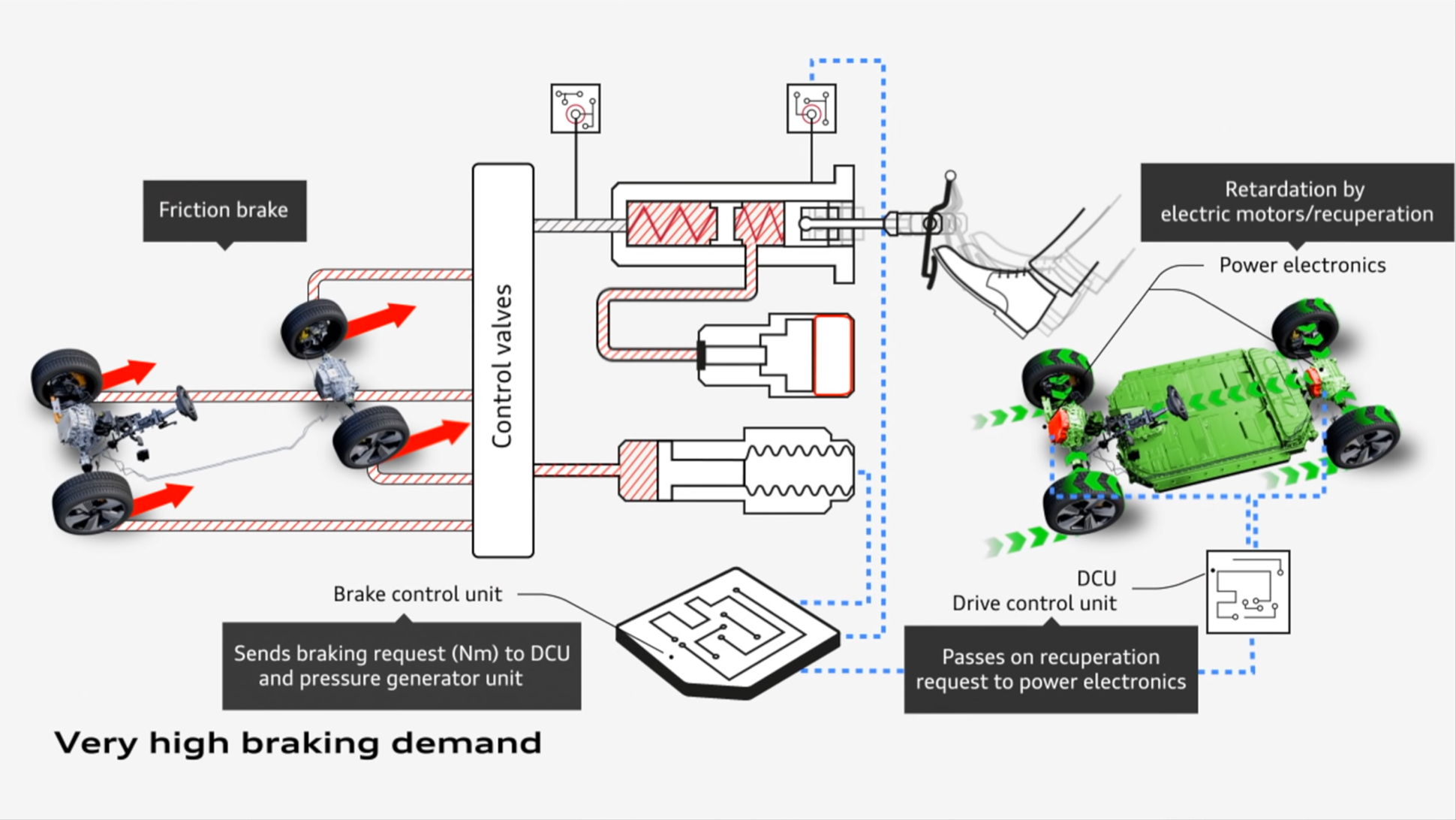

Brake-by-wire systems are becoming more common thanks to their compact packaging and ability to manage electrified cars’ regenerative braking systems. That doesn’t mean everyone is necessarily comfortable with this new tech, though.
One of the most frequent criticisms involves the “by-wire” part—as in, if there’s no physical connection between the brake pedal and the brakes themselves, what happens if the system fails? Thankfully, Engineering Explained did a deep-dive into the new Audi E-Tron Sportback’s brake-by-wire system to dispel that fear.

We’ve explained the E-Tron’s braking system in detail on The Drive before, but Engineering Explained’s simplified animated breakdown makes it super easy to understand how these systems work.
All “brake-by-wire” means is that the braking system is electronically controlled. When you press on the pedal, a position sensor sends the amount of pressure you’re applying to a brake control unit, which uses that input to apply pressure to the brakes. In the case of electric and hybrid cars, this brake control unit uses that pedal input to figure out how much deceleration to get through regenerative braking and when to apply the conventional brakes on top of that.
That being said, the brake-by-wire system—at least in the E-Tron Sportback—doesn’t completely rely on that electronic connection. It isn’t two pieces connected by wire, as the name might have you think. There’s still a path for brake fluid from the brake master cylinder to the individual brake calipers. When the system isn’t functioning as intended, it opens up a valve to use this redundant hydraulic braking system to slow the car instead.
Of course, this doesn’t alleviate the other common complaint about the simulated feedback produced by brake-by-wire systems feeling synthetic, disconnected or numb. Under normal circumstances when the brake-by-wire system is behaving as it should, that feedback through the brake pedal is simulated—and some manufacturers are better than others at translating what’s happening at the wheels back to your foot.
Got a tip? Send us a note: tips@thedrive.com